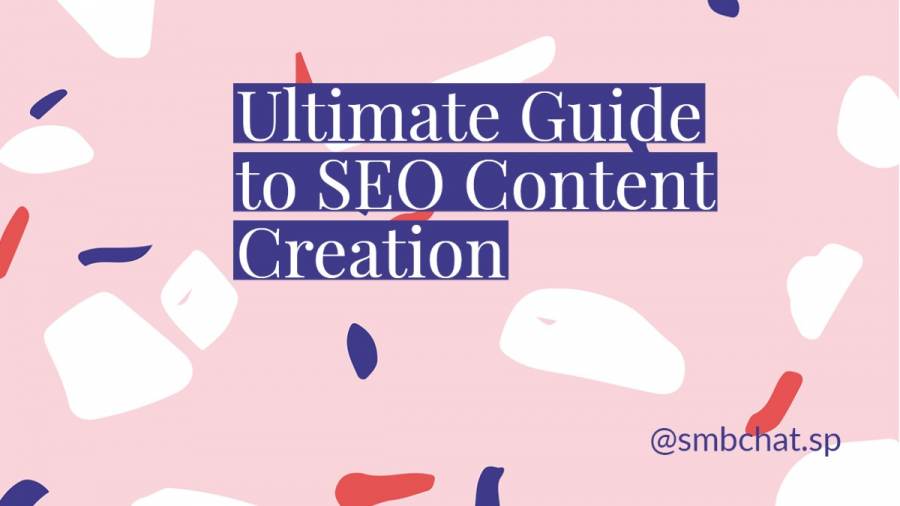How to Create a Winning Content Strategy for the Year 2025
Imagine you are about to take a road trip with your best friend.
Your bags are packed, your itinerary is set, and you're ready to hit the road for an adventure.
As your friend starts the car, you smile and ask them, "Hey, want me to pull up my GPS?"
They smile back. "Oh no. I don't need directions. I've got this."
Your shake your head in confusion. "But we don't know how to get there!" "Yeah," they say, rubbing their chin. "I figured I'd just drive around till we find the place."
Ten hours later, you're still driving in circles, nowhere close to your destination.
Does leaving for an adventure without a roadmap in mind sound like lunacy? It's definitely no way to plan a road trip. But that's exactly how you'd sound if you attempted to plan a content creation plan without a content strategy.
A solid content strategy acts as your GPS, giving you direction and outlining a no-fluff roadmap to your destination—your destination, in this case, being well-crafted content that sweeps your target audience off their feet.
In this guide, I'm going to show you how to create a content strategy that supports, augments, and streamlines your content creation process.
Sounds too good to be true? Why don't you read this blog post to the very end and find out for yourself?
What is a Content Strategy, Exactly?
Let me guess. You've only ever heard about "content strategy" two times.
The first time being when you attended that flashy, star-studded B2B marketers convention in Athens.
The second time was when your colleague, Jane, threw it up in some conversation about content marketing late last year. Of course, you didn't contribute. Such was your cluelessness on the matter.
Thank goodness you stumbled upon this guide.
A content strategy is more about high-level planning than anything else. It's the roadmap that guides your content creation process.
As a copywriter who has written for some of the biggest brands in the world, I like to think of a content strategy as your brand's game plan for reducing churn and driving engagement through content.
Some might say that a content strategy informs a content marketing plan and not a content creation framework. I beg to differ.
You wouldn't start marketing content that doesn't exist yet, right? Guess what informs that whole content creation process? That's right—a content strategy.
At its core, a content strategy defines:
The business goals you're trying to accomplish (think: low churn, more social engagement, high organic traffic, more conversions, etc.)
- Who you're trying to reach, aka your target audience
- What types of content you'll publish (think: blog posts, white papers, product pages, etc.)
- How your content will support the brand
- How you'll promote and amplify the pieces of content you've created
- How will your content be differentiated (will it just be the plain 'ol long-form content, or maybe you'll add some facts and statistics to beef it up?)
- The metrics that define success
Want to know why your content strategy truly matters? Here you go:
- 60% of the most successful B2B marketers have an effective content strategy
- 60% of marketers find it hard to churn out content consistently
- 62% of people don't know how to measure the ROI of their content marketing efforts
- 65% find it challenging to produce engaging content
To sum up this section, I'd like to reiterate that a content strategy isn't some "nice-to-have" that you can sweep under the carpet as you wish.
For business owners who want to keep crafting high-quality content that meets their business goals, a content strategy is an absolute must-have.
It's really that simple.
Your Content Creation Primer: How to Create a Content Strategy That Ticks All the Right Boxes (In 7 Simple Steps!)
Step #1: Determine Your Content Goals
As obvious as this step sounds, most business owners and marketers still fumble at it.
How they do that is still a mystery to me.
Before you launch any content strategy, it's important to establish clear content goals and KPIs. After all, without well-laid-out goals, you can't measure the success of your content creation efforts. Neither can you communicate ROI to the relevant stakeholders.
To formulate solid content business goals, ask yourself these questions:
- Who are we?
- What do we do?
- What customer pain points are we trying to solve?
- How can we solve these pain points differently or better?
- How will a content strategy help us?
- What are our content goals, both short-term and long-term?
Speaking of content goals, examples would include:
- Nurturing leads to conversions
- Reducing churn to 2% or thereabout
- Attracting potential customers
- Encouraging repeat business
- Growing brand awareness
- Encouraging free trial sign-ups
It's natural for your goals to shift as your business evolves. For example, when you are just dipping your toes into the content marketing waters, you may want to focus on brand awareness. However, as your organization garners popularity, your attention may shift to lead generation.
Regularly peep into your content goals to make sure they're perfectly aligned with your business objectives. That isn't difficult to do, or is it?
Step #2: Know Thy Audience Like the Back of Thy Hand
"When you speak to everyone, you speak to no one."
I know. You low-key hate this Meredith Hill quote because it is as cliché as quotes can get.
My apologies, but you'll have to bear with me. I think it's super appropriate in this context (wink!).
For your content to actually speak to someone, you need to know the very things that make your target audience stare at the ceiling at 2 am.
That said, don't just scratch the surface. Go deeper. For starters, interview your sales team and glean every bit of insight you can get about your target audience.
These four questions should help nail down your audience persona and customer journey in general:
- Who do you want your content to address? Is it solely the end-user? Or maybe it's a mix of the end-user, C-level executives, the customer, and external stakeholders?
- What makes them lose sleep at night? Your target audience deserves quality sleep, but they aren't getting it because their pain points linger in their mind every night. Will your content finally banish these pain points?
- In which avenues do they like to consume content? Does your target audience spend a majority of their time on social media platforms? Or are they simply obsessed with Google?
- How do they source this information? Via video content? Or maybe they love, love, love blog posts?
The answers to these questions will help you to know:
- Which types of content to use—long-form content, video, audio, or maybe short, stats-rich blog posts
- Where in the sales funnel the intended audience is—bottom, middle, or maybe top of funnel
- What topics to tackle
- The delivery channels that make sense for your content strategy and content marketing plan in general— social media, search engine optimization (SEO), PPC, email newsletter, etc.
Step #3: Tap into What Makes You…Well, You
We, humans, are amazingly unique creatures. Even the face you make when you accidentally bump into a swarm of bees is unique.
As such, endeavor to make your content unique. Fact is, authenticity works. 86% of customers say that authenticity is a key factor when deciding what brand they like and support.
Now you're probably wondering: "How do I make compelling content that's 100% original?"
By tapping into the authentic heart of your brand. By making sure every content you create is a true and unique representation of your perspective and knowledge. Yes, by being honest.
In other words, create an original voice for your brand, one that customers can recall even when they're having dinner at The Ritz-Carlton.
Step #4: Scrutinize the Competition, With Laser-Sharp Precision
Let's face it. Working in a vacuum almost always guarantees zero results.
If you want your content strategy to truly take off, you have to step out of fantasy and into reality—look at what your competition is doing.
What seems to be working for them?
More importantly, are there things they aren't doing that could work wonders with your target audience?
For instance, only 5% of content creation budgets go into podcasts—could this be an opportunity in your niche?
SEMrush, SpyFu, Owletter, and Quick Search are all excellent competitor analysis tools that could help you identify viable gaps in your industry.
Step #5: Put It On Record…A Content Strategy Is Best Written than Said
Science has it that the human brain can only remember four things at a time.
On that premise, what are the chances that a business owner will remember the nuts and bolts of their content strategy on a hot, swim-worthy afternoon in September?
Yeah, right…ZERO.
To avoid losing track of your content strategy down the road, write it down. File it into a document, and if you don't trust your clumsy self, type it out and upload it on the cloud.
A content strategy is a roadmap, after all, so it's best if you craft it in a way that allows you to go back to reference, fine-tune, and adjust it often.
Step #6: Figure Out How You'll Measure Results
Yet another step that most content creators blatantly ignore, but one with tremendous importance.
How else will you know if your content strategy is working if you can't measure its outcomes?
With your content creation goals in mind, go ahead and determine the KPIs and metrics that will make sense for measuring your content strategy.
Here are a few content creation metrics along with the goals behind them (and, yes, they also apply to content marketing):
- Engagement on social media: Pushing for a change in thinking
- Shares, views, traffic: Growing brand awareness
- Email newsletter sign-ups: Cultivating customer loyalty
- Conversions: Encouraging free trial sign-ups
- Reducing bounce rate: Retaining first-time visitors
And a lot more.
Remember, you don't have to break your back measuring the success of your content. You can always utilize the bevy of analytic tools and software available out there—Google Analytics is my personal favorite as it is super intuitive and….yes, free!
Step #7: Test, Refine, and Repurpose Your Content Accordingly
So far, so good. You can almost envision yourself sitting at your plush office chair, sipping your favorite coffee, and gently flipping through the pages of a well-documented content strategy.
But wait a minute, how do you plan to retain the effectiveness of your content strategy 12 months down the line?
You didn't think about that, did you?
There's so much to a content strategy than just uploading content and hitting the PUBLISH button. So many variables affect content performance, and testing is the only way to know what's relevant and what's stale.
Consider split testing, aka A/B testing. It's proven, easy to conduct, and helps you to know which content piece is working better than the other.
Speaking of working better, your content strategy can only stand the test of time if you optimize it frequently. Optimization can mean different things, including:
- Taking a more synthesized approach to content creation by considering SEO requirements
- Changing the way you approach content distribution, i.e., uploading content on Monday rather than Friday
- Conducting a content audit every now and then
- Hiring a copywriter to ideate and lengthen your content lifecycle
- Bringing in a content management system to gain more over your content
- Upgrading the layout and design of your website
- Using attention-grabbing headlines for your social media posts
- Rewriting a blog post with relevant keywords
- Using a content calendar to keep your content creation team accountable
- Switching between different content channels to determine which works best
Lastly, you don't have to dump every piece of content that gets stale. An opportunity for content repurposing awaits. If you feel a blog post has outlived its usefulness, refresh, rework, or update it.
For example, you could turn a popular "how-to" guide into a step-by-step tutorial or video. Or you could repurpose the contents of a well-known blog to be used as a foundation of a yet-to-launched eBook.
Sounds Like Too Much Work? We've Got Your Back
Truth be told, crafting an effective content strategy isn't a stroll in the park. It requires hard work, patience, and, most of all, dexterity.
The first two are easy to nail down, but dexterity? That's a whole different story. You need a copywriter to help you with that.
At Zoey Writers, we've spent the past few years perfecting our content strategy creation skills. We are dexterous professionals who aim for excellence, through and through. Let us take over your content strategy needs, so you do what you do best: make moola!
Cheers.
















